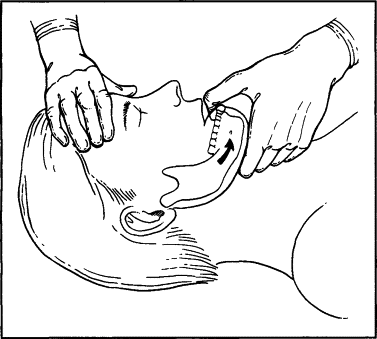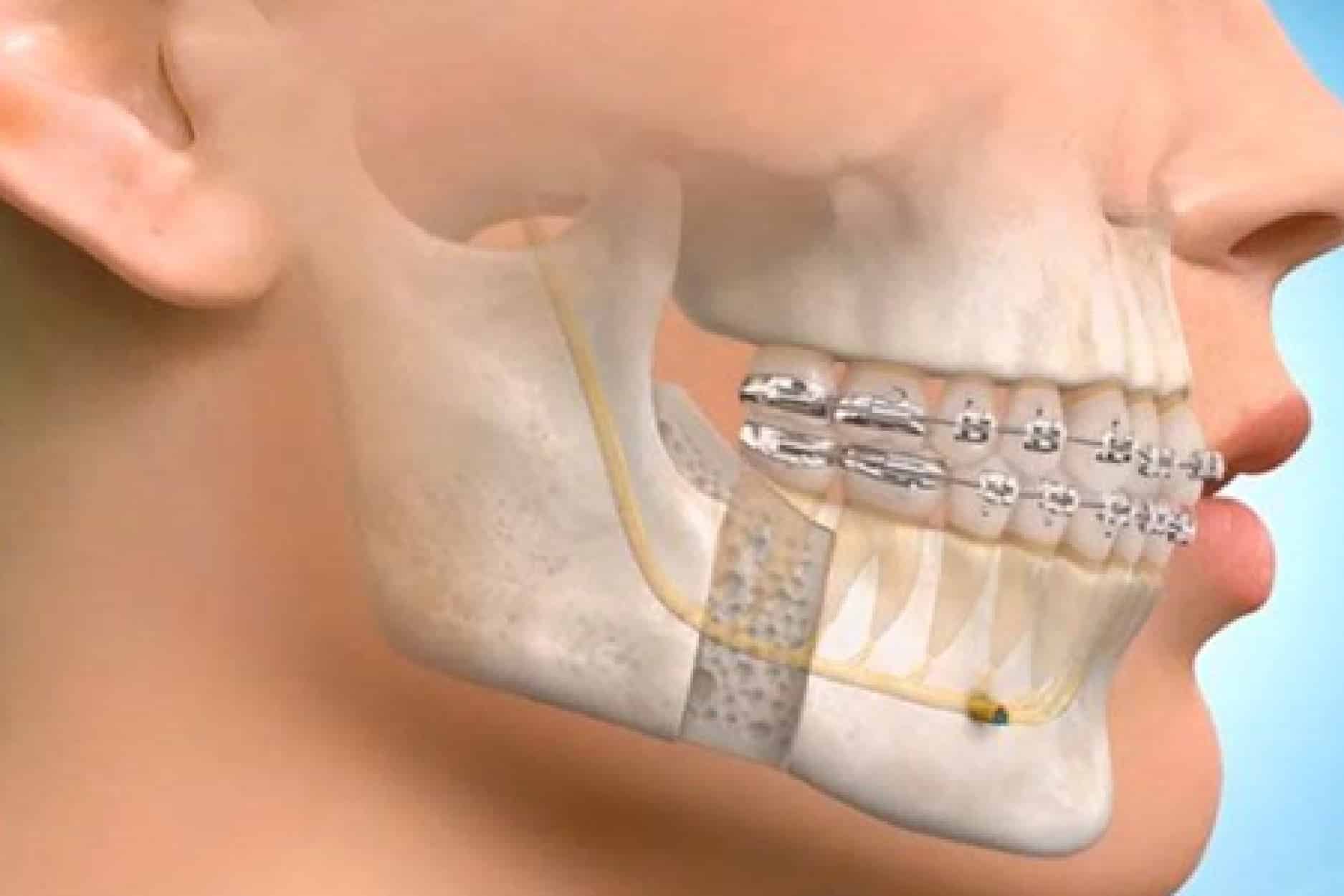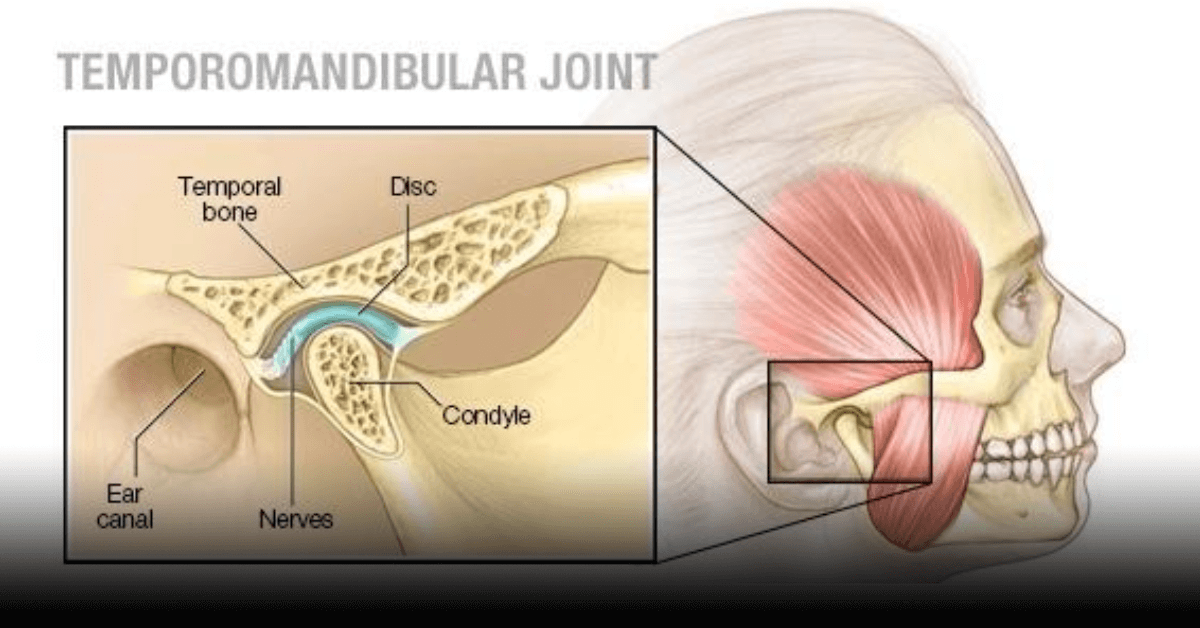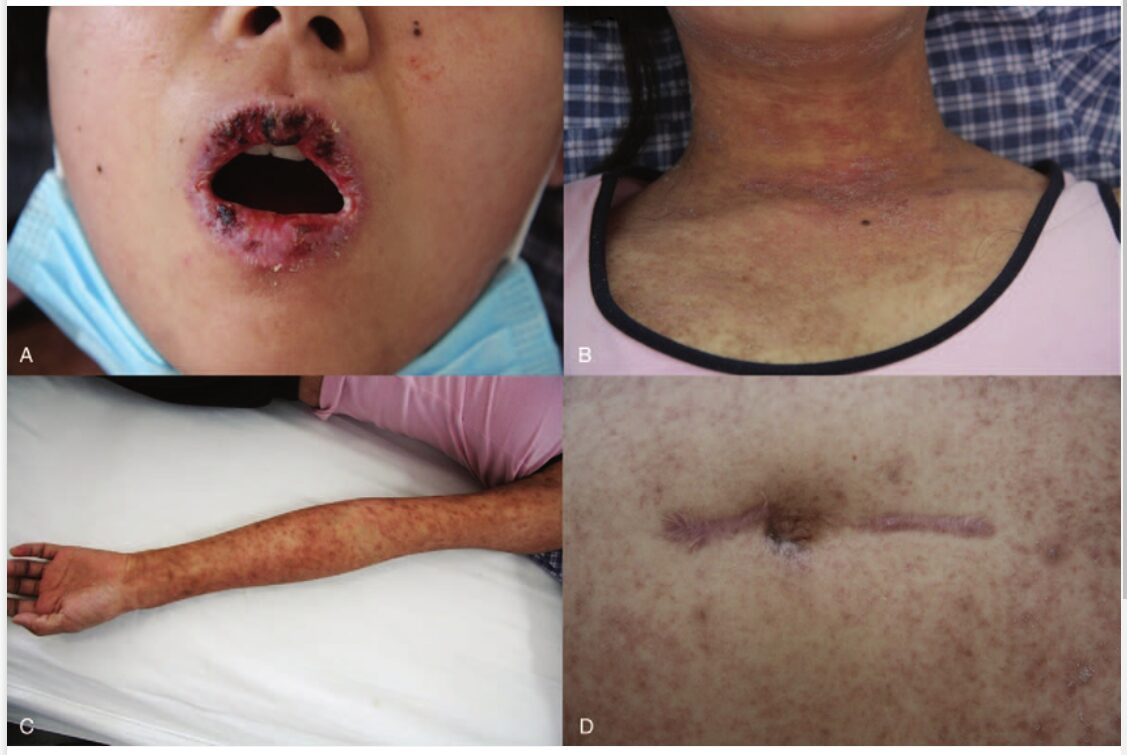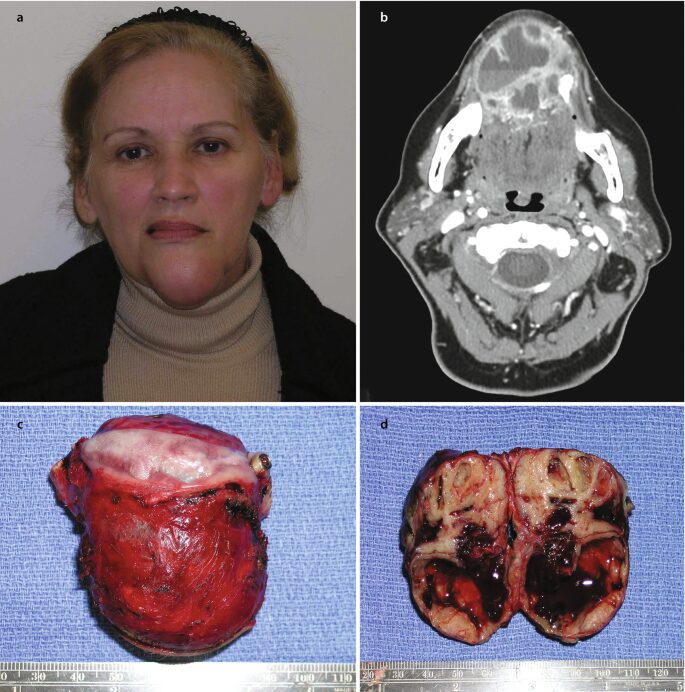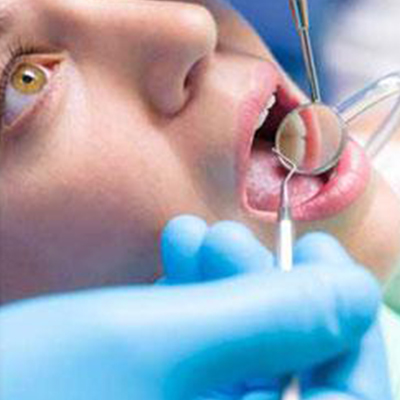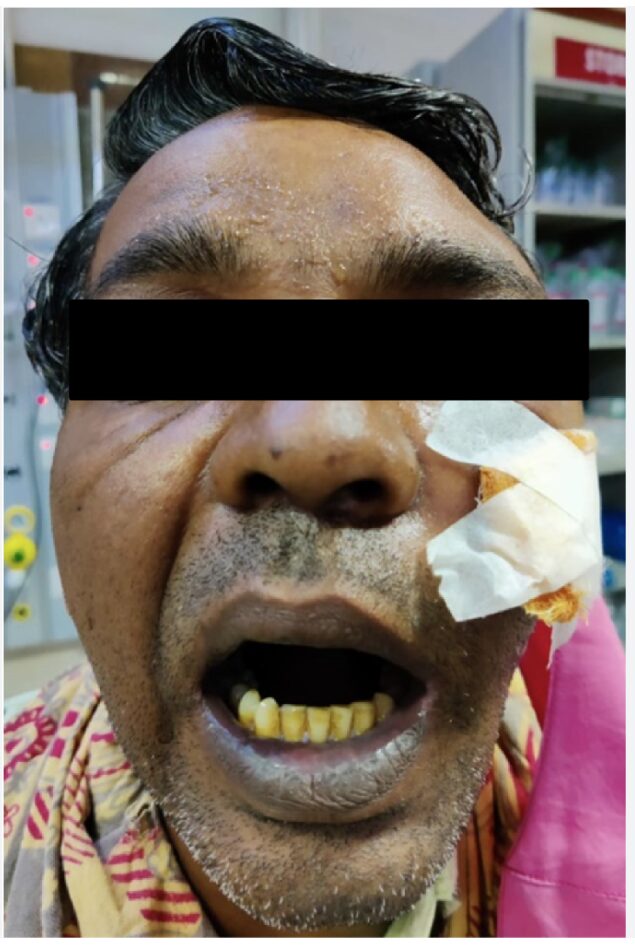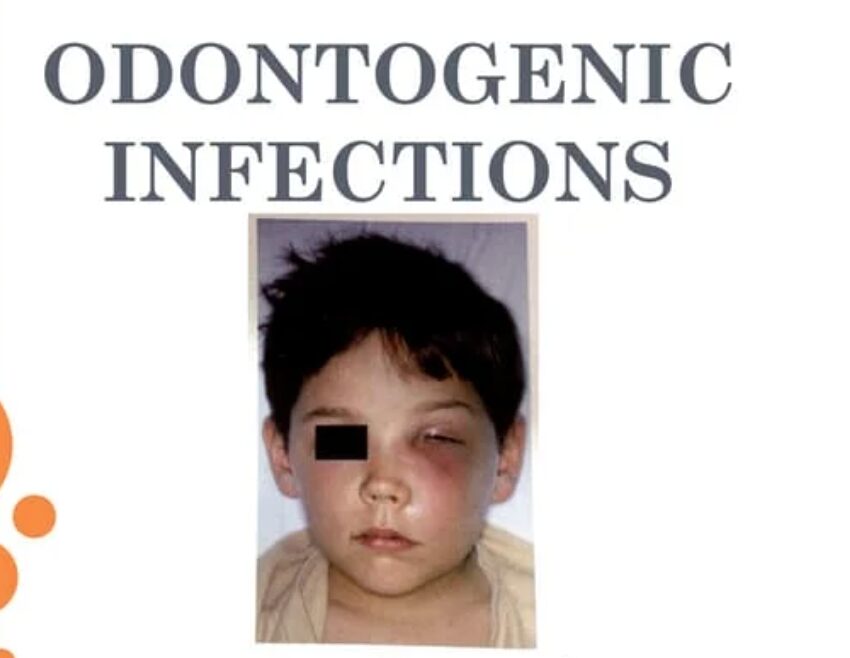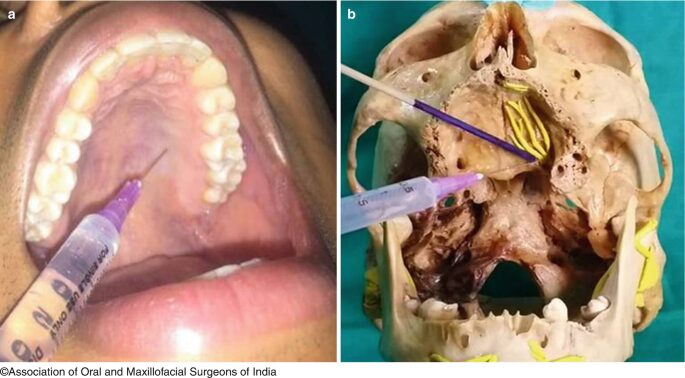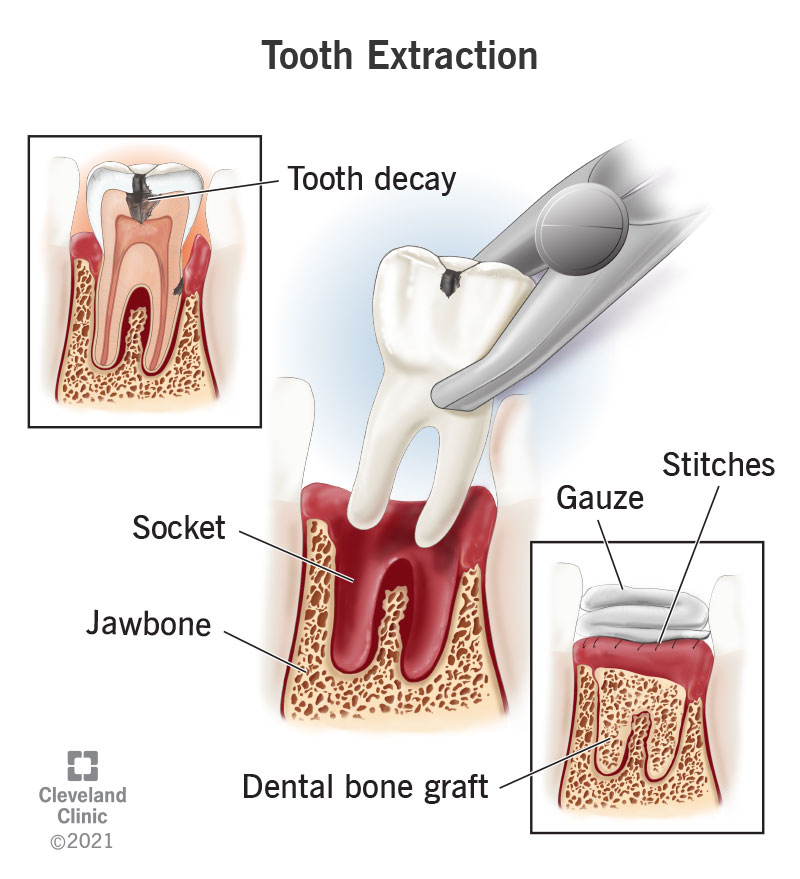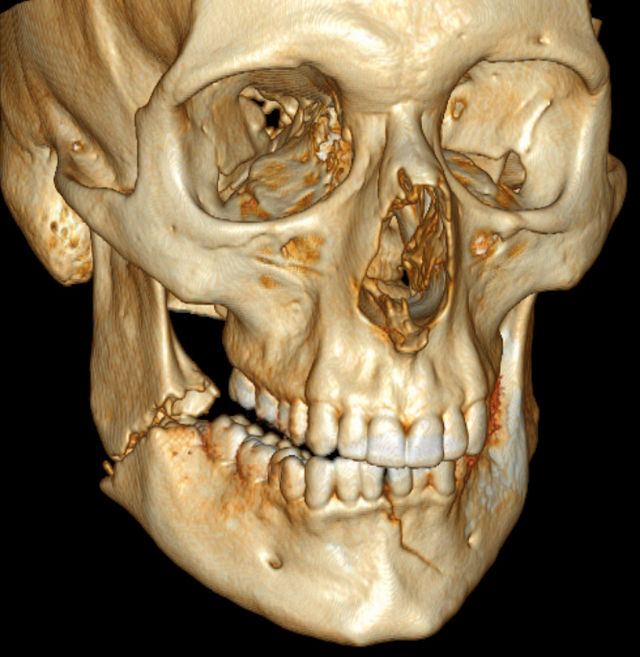In this Post you will be able to take quiz containing important MCQs of Oral and Maxillofacial Pathology and topic covered in this Quiz will be Development Disturbances. Correct Answers are Marked in Bold and Blue colour.
Development Disturbances Multiple Choice Questions
- Static bone cyst is a cyst developing from:
A. Infection of Salivary gland in the mandible
B. Tissue of the odontogenic apparatus
C. Tissue of the oral mucosa
D. None of the above
- A 6 year old patient with extra cusp on maxillary central incisor is associated with all except:
A. Mohr’s syndrome
B. Sturge-Weber Syndrome
C. Rubinstein Taybi Syndrome
D. Proteus Syndrome
- A 4 year old child with one tooth less than the normal dentition shows large tooth with two crowns and two root canals, the anamoly is:
A. Dilaceration
B. Fusion
C. Gemination
D. Concrescence - The cyst which is found within the bone at the junction of the globular process, the lateral nasal process & maxillary process is:
A. Naso-alveolar cyst
B. Globulomaxillary cyst
C. Naso palatine cyst
D. Mid palatine cyst - The cyst located at the junction of medial nasal process, lateral nasal process and maxillary process is:
A. Globulomaxillary cyst
B. Median palatine cyst
C. Nasopalatine cyst
D. Nasoalveolar cyst
- The torus mandibularis most commonly seen in the region of:
A. Incisor region
B. Canine region
C. Molar region
D. Premolar region
- Dentinal union of two embryologically developing teeth is referred as:
A. Gemination
B. Twinning
C. Concrescence
D. Fusion
- Which one of the following is the cause of dilacerations?
A. Trauma to the tooth germ during root development
B. Abnormal displacement of tooth germ during root development
C. Abnormal proliferation of enamel epithelium during tooth development
D. Abnormal displacement of ameloblasts during tooth formation - Taurodontism is usually seen in:
A. Mesiodens
B. Incisor with talon/cusp
C. Mandibular first molar
D. Maxillary premolars - Large pulp chambers are characteristic of all the following conditions except:
A. Shell teeth
B. Tauradontisam
C. Dentin Dysplasia
D. Dentinogenesis imperfecta
- The inheritance pattern of dentinogensisimperfecta is:
A. Homozygous
B. Autosomal dominant
C. Recessive
D. X-linked recessive - Which of the following teeth is most likely to be congenitally missing:
A. Maxi. central incisor
B. Mandibular canine
C. Mand. second premolar
D. Maxillary first premolar - In Treacher collin’s syndrome there is:
A. Upward sloping of the palpebral fissure
B. Poorly developed or absence of malar bones
C. Progenia and mandibular prognathism
D. No loss of hearing - A bony hard asymptomatic swelling found on the midline of the hard palate that appears radiopaque on a radiograph is most likely a:
A. Odontoma
B. Myxoma
C. Boney cyst
D. Torus palatinus
- Talon’s cusp is characteristic of which syndrome:
A. Edward’s syndrome
B. Klinefelter’s syndrome
C. Rubinstein Taybi syndrome
D. Down’s syndrome - Which of the following is unlikely to cause enamel hypoplasia?
A. Rickets
B. Fluoride
C. Congenital syphilis
D. Cleidocranial dysostosis
- Shell teeth are more common in this variant of dentinogenesis imperfect:
A. Type I
B. Type III
C. Type II
D. Type IIII and I - The 2nd common most supernumerary teeth is:
A. Mesiodens
B. Distal to 3rd molar in maxilla
C. Distal to mandibular 3rd molar
D. Para molars - Estein Pearls are:
A. Gingival cyst of newborn
B. Gingival cyst of adult
C. Enamel pearls
D. Epithelial rests - A 15-year old boy shows an inverted pear shaped radiolucency between the upper central incisors. The teeth are normal in all aspects The most likely diagnosis is:
A. Globulomaxillary cyst
B. Nasopalatine cyst
C. Aneurysmal cyst
D. Dentigerous cyst - In children the most frequently missing permanent teeth are?
A. First premolars
B. Second Premolars
C. Max. lateral incisors
D. Mandibular lateral incisors - Estesin pearls are cysts that arise from:
A. Squamous tissue of the mucosa
B. Connective tissue of the mucosa
C. Rests of malassez
D. Dental lamina
- Median rhomboid glossits is associated is associated with:
A. Oral cancer
B. fungal infection
C. Leukoplakia
D. Burning sensation of tongue - A 4-year old child has a normal complemented of primary teeth but they are gray and exhibit extensive occlusal and incisal wear. Radiographic examination indicates extensive deposits of secondary dentin in these teeth. Most likely this condition is:
A. Neonatal hypoplasia
B. Amelogenesis imperfecta
C. Cleidocranial dysplasia
D. Dentinogenesis imperfecta
- Geographical tongue, all are true except:
A. Lesions may be Bilaterally symmetrical on tongue
B. No treatment is required
C. Is a precancerous condition
D. May be related to emotional stress - Anodontia affects the growth of:
A. Maxilla
B. Mandible
C. Alveolar bone
D. Cranium - Which of the following is Fissural cyst is:
A. Dentigerous cyst
B. Primordial cyst
C. Nasopalatine cyst
D. Radicular cyst - Taurodontism is characterized by:
A. Hypercementosis
B. Elongated wide pulp canals and short roots
C. Obliterated pulp chambers with secondary dentine deposition
D. Rootless teeth with thin shell of enamel - Naso-Labial cyst is thought to arise from?
A. Remnants of cell rests of serrae
B. Remnants of cell rests of mallasez
C. Remnants of cell rests of embryonic lacrimalduct
D. Maxillary sinus lining epithelium - Hairy tongue is characterized by:
A. Hypertrophy of fungiform papillae
B. Hypertrophy of foliate papillae
C. Hypertrophy of filiform papillae
D. Hypertrophy of circumvallate papillae - Multiple osteomas, multiple polyposis, supernumerary teeth are found in:
A. Reiter’s syndrome
B. Peutz – jeghers syndrome
C. Gardner’s syndrome
D. Behcet’s syndrome - Dental anomaly of teeth associated with defective bone formation is seen in:
A. amelogenesis imperfecta
B. dentinogenesis imperfecta
C. Odontodysplasia
D. Osteitis deformans - Turners tooth is seen in:
A. enamel hypoplasia due to hypocalcemia
B. enamel hypoplasia due to birth injuries
C. enamel hypoplasia due to congenital syphilis
D. enamel hypoplasia due to local infection or local trauma
- Bohn’s nodules are:
A. Cystic swellings in neonates
B. Cysts associated with soft palate
C. Cysts of gingiva in growing children
D. Warts on the tongue - Dentinogenesis imperfecta is:
A. Autosomal dominant
B. Autosomal recessive
C. Se* linked recessive
D. Not a inheritable trait - Gardner syndrome does not include:
A. Osteomas
B. Epidermoid cysts
C. Osteosarcoma
D. Impacted permanent teeth - Hypoplastic defects in permanent central and lateral incisors are likely to result due to severe illness or other factors during:
A. First nine month of life
B. First two years of life
C. First month of life
D. Two or three years of life - Fordyce’s spots are:
A. Fat tissue embedded in buccal mucosa
B. Red spots
C. Present on the cheek mucosa lateral to angle of the mouth
D. All of the above - The most common supernumerary tooth form is:
A. Tuberculated
B. Conical
C. Screw shaped
D. Incisor shaped - Absence of pulp chambers is seen in:
A. Craniofacial dysostosis
B. Dentinogenesis imperfecta
C. Amelogenesis imperfecta
D. None of the above - Which of the following lesions does not give blood on aspiration:
A. Heamagioma
B. Static bone cyst
C. Central giant cell granuloma
D. Aneursycimal bone cyst - A deep pit lined by enamel seen in the lingual surface of Maxillary lateral incipor is most likely to be:
A. Dens in dente
B. Enamel Hypoplasia
C. Talon’s cusp
D. Enamel Pearl - True generalized microdontia is characterized by:
A. Small teeth with large jaws
B. Small teeth with small jaws
C. Smaller teeth than the normal
D. Large teeth with small jaws - A permanent tooth with a local hypoplastic deformity in a crown is called:
A. Turner’s tooth
B. Taurodontism
C. Enameloma
D. Ghost teeth - Developing Ameloblasts are effected by the ingestion of high fluoride content water resulting in:
A. Turners tooth
B. Hutchinson’s teeth
C. Mottled enamel
D. Moon’s molars - Which of the following is a soft tissue cyst which do not produce any radiographic changes:
A. Nasolabial cyst
B. Nasopalatine cyst
C. Mid alveolar cyst
D. Palatine cyst - Which of the following features are of naso alveolar cyst:
A. An avoid shaped radiolucency above the lateral incisor and canine teeth
B. Erosion of base above lateral incisor and canine teeth
C. An inverted funnel shaped radiolucent lesion above the roots of lateral incisor and canine teeth
D. A pear shaped radiolucent lesion between roots of lateralincisor and canine teeth - The term dilacerations refers to:
A. A deformity of a tooth consisting of a sharp bend bend in the root
B. Abrasions on two surfaces of single tooth
C. A root or tooth that is split into two
D. A tooth that is fractured at two or more places - A girl suffering from browing of teeth, wearing of enamel but not cavitory, OPG shows obliteration of pulp with narrowing of canal & deposition of secondary dentin, she gave the history that out of her 4 brothers 2 are suffering from the same disease, She is suffering from:
A. melogenesis imperfecta
B. Dentinogenesis imperfecta
C. Flurosis
D. Odontodysplasia - Failure of descent of thyroid analage can be seen in the tongue:
A. In anterior 2/3 of dorsal aspect
B. In posterior 1/3 of dorsal aspect
C. Near the base of tongue close to foramen caecum
D. In anterior 2/3 of inferior surface - Geographic tongue is of red colour because of:
A. Infiltration of eosinophils
B. Infiltration of neutrophils
C. Both of the above
D. None of the above
- Developmental enamel defects are most commonly seen in:
A. Primary incisors
B. Primary 2nd molar
C. Permanent incisors
D. Permanent 1st molar - Fordyce granules mostly occurs in all of the following area EXCEPT:
A. Vermilion of the lip
B. Posterior tonsillar pillar
C. Alveolar ridge
D. Palate - A 7-year old child having yellowish discoloured spot of maxillary central incisor. His mother presents a history of injury to deciduous tooth 3 years back with recurrent infection & swelling. The diagnosis is:
A. Turners hypoplasia
B. Generalised dental fluorosis
C. Syphillitic hypoplasia
D. Rickets hypomineralisation - Amelogenesis imperfecta is a disorder of:
A. Ectoderm
B. Mesoderm
C. Endoderm
D. Ecto and Mesoderm - Hypodontia is mainly found in all except:
A. Papillion levefre syndrome
B. Osteopetrosis
C. Cleidocranialdysostosis
D. Ectodermal dysplasia - A child has marked difference of crown, root size, eruption pattern of left & right side of jaw. The condition is:
A. Crouzan syndrome
B. Hemifacial hypertrophy
C. Cherubism
D. Achondroplasia - Marked reduction in amount of dentin, widening of predentin layer, presence of large area of interglobular dentin and irregular pattern of dentin is seen in:
A. Hypocalcified dentin
B. Odonto dysplasia
C. Dentin dysplasia
D. Dentinogenesis imperfecta - Brittle bone syndrome is caused by:
A. Improper synthesis of procollagen
B. Polymerisation of collagen
C. Increase osteoclastic activity
D. Increase fibroblastic activity - Based on the degree to which apical displacement of the pulpal floor is seen, Cynodont is the name given to:
A. Hypotaurodont
B. Mesotaurodont
C. Hypertaurodont
D. Normal tooth
- According to Veau’s classification of cleft lip & palate, isolated cleft palate falls under:
A. Group I
B. Group II
C. Group III
D. Group IV - Premaxilla-premaxillary cyst:
A. Nasoalveolar cyst
B. Nasopalatine cyst
C. Incisive canal
D. Globulomaxillary cyst
- Cysts associated with vital teeth are:
A. Dentigerous cyst, Globulomaxillary cyst, lateral periodontal cyst, OKC
B. Dentigerous cyst, Globulomaxillary cyst, radicular cyst
C. Dentigerous cyst OKC, radicular cyst
D. ‘B’ & ‘C’ - Most common site for melanoticneuroectodermal tumour of infancy is (MNTI):
A. Maxila
B. Mandible
C. Ethmoid bone
D. Cervical spine - Taurodontism is seen in:
A. Klinefelter’s syndrome
B. Sturge weber syndrome
C. Down syndrome
D. Turner syndrome - Which of the following is most common development cyst:
A. Nasopalatine cyst
B. Naso-alveolar cyst
C. Globulomaxillary cyst
D. Median palatal cyst - The histological appearance of “lava following around boulders in dentin dysplasia suggests:
A. Attempt to repair the defective dentin
B. Abrupt arrest to dentin formation in crown
C. Abnormal dentin formation in a disorganized fashion
D. Cascades of dentin to form root
- The most common congenital defect of the face and jaws is:
A. Macrostomia
B. Fetal alcohol syndrome
C. Cleft lip and palate
D. Ectodermal dysplasia - Submerged teeth are:
A. Ankylosed teeth
B. Unerupted teeth
C. Impacted teeth
D. Intruded teeth - In Hypodontia, the most commonly affected tooth is:
A. Permanent third molar
B. Permanent second premolar
C. Permanent lateral incisor
D. Permanent Canine - PARULIS is an inflammatory enlargement seen in:
A. End of sinus tract
B. Extraction Socket
C. Due to irritation from calculus / over hanging restoration
D. None of the above - Puetz-Jegher syndrome is characterized by:
A. Deafness
B. Multiple supernumerary teeth
C. Multiple intestional polyps
D. scleroderma - Dense in dente is most commonly seen in:
A. Paramolars
B. Paramolars
C. Lateral incisors
D. Maxillary canine - Heck’s disease is another name for:
A. Focal epithelial hyperplasia
B. Fibromatosis gingiva
C. Oral melanotic macule
D. Hereditary intestinal polyposis syndrome - Which of the following dentitions shows the highest frequency of occurrence of supernumerary teeth?
A. Maxillary deciduous dentition
B. Maxillary permanent dentition
C. Mandibular deciduous dentition
D. Mandibular permanent dentition - Pierre Robin syndrome is associated with:
A. Micrognathia
B. Cleft of the lip and plate
C. Tetrology of fallot
D. Syndactally - Which of the following conditions is characterized by abnormally large pulp chambers?
A. Amelogenesis imperfecta
B. Regional odontodysplasia
C. Dentinogenesis imperfecta
D. Dentinal dysplasia type I - Thistle-tube appearance of pulp chamber is a feature of?
A. Cornal dentin dysplasia
B. Regional odontodysplasia
C. Dentinogenesis imperfecta
D. Amelogenesis imperfecta - Mulberry molars are characteristic features of?
A. Severe flurosis
B. Trauma at the time of birth
C. congenital syphilis
D. Due to chronic suppurative abscess in over lying gingival tissue - Complete obliteration of pulp is seen in all except?
A. Type I dentinogenesis imperfecta
B. Type II dentinogenesis imperfecta
C. Type III dentinogenesis imperfecta
D. Dentin dysplasia - Turner’s hypoplasia most commonly affects?
A. Deciduous maxillary anteriors
B. Deciduous mandibular anteriors
C. Permanent maxillary anteriors
D. Permanent manibular anteriors - Which of the following is not hereditary?
A. Amelogenesis imperfecta
B. Cleidocranial dysostosis
C. Regional odontodysplasia
D. Dentinogenesis imperfecta - Odontodysplasia is most common in?
A. Mandibular premolar
B. Mandibular canine
C. Mandibular third molar
D. Maxillary central incisor
- Hutchinson’s incisiors are present in:
A. congenital syphilis
B. Tertiary syphilis
C. Secondary syphilis
D. Acquired syphilis - A dens in dente is usually caused by?
A. An abnormal proliferation of pulp tissue
B. Denticle formation within the pulp tissue
C. A deep invagination of the enamel organ during formation
D. A supernumerary tooth bud enclaved within a normal tooth - Most commonly submerged tooth is?
A. Mand. Primary 1st moral
B. Mand. Primary 2nd moral
C. Maxi. Primary 1st moral
D. Maxi. Primary 2nd moral - A developmental abnormality characterized by the presence of fewer than the usual number of teeth is:
A. Anodontia
B. Oligodontia
C. Microdontia
D. Dens is dente - Which of the following dental sequel is likely in child with a history of generalized growth failure (failure to thrive) in the first 6 month of life?
A. Retrusive maxilla
B. Enamel hypoplasia
C. Retrusive Mandible
D. Dentinogenesis imperfecta - Delayed eruption of at least part of dentition is a recognized feature of all of the following except?
A. Rickets
B. Congenital hyperthyroidism
C. Cleidocranial dysplasia
D. cherubism - Bifid tongue a congenital anomaly occurs due to non-fusion of?
A. Tuberculum impar and lateral lingual swellings
B. Hypobranhiral eminence and tuberculum impar
C. The two lateral lingual swellings
D. Some of the above - Mottled enamel is due to:
A. Vitamin A deficiency
B. Excess of fluoride
C. Vitamin D deficiency
D. Teratogens - Microdontia is most commonly seen affecting:
A. Max. lateral incisor
B. Mand. Second premolar
C. Mand. Central incisor
D. Mand. first premolar - A 4-year old child has less number of teeth and lateral incisors with bifurcated roots with two root canals is called?
A. Dilaceration
B. Concrescence
C. Fusion
D. Gemination - Prolonged administrator of broad spectrum antibiotics results in the formation of:
A. Black hairy tongue
B. Median rhomboid glossitis
C. Geographic tongue
D. Fissured tongue - Fusion of teeth is more common in:
A. Primary dentition
B. Permanent dentition
C. Mixed dentition
D. None of the above - All are true about supernumerary tooth except?
A. May have resemblance to normal teeth
B. Disto molars doesn’t resemble any other tooth
C. Mesiodens is the most common supernumerary tooth
D. More common in mandible
- False about anodontia?
A. May involve both the deciduous and the permanent dentition
B. In false anodontia tooth doesn’t undergo full development
C. May involve a single tooth
D. In total anodontia all teeth are missing - Clinical evidence of dentinogenesis imperfecta is?
A. Defective enamel and dentine
B. Defective dentine and obliterated pulp chamber
C. Increased rate of caries
D. Oligodontia - Lingual tonsils arise?
A. As developmental anomalies
B. From carcinomatous transformation
C. As a result of hyperpalsia
D. Due to repeated trauma in the area - Ectopic sebaceous glands in the mouth are called?
A. Linea alba buccalis
B. Heck’s disease
C. Lingual verices
D. Fordyce spots - Most common missing tooth in the permanent dentition is?
A. Maxillary canine
B. Maxillary first molar
C. Mandibular second premolar
D. Mandibular first molar - A patient notices a well demarcated area of depapillation on his tongue which has been there for as long as he can remember, The most probable diagnosis?
A. Median rhomboid glossitis
B. Geographic tongue
C. Black hairy tongue
D. Moeller’s glossitis - Dentinogensis imperfecta differs from amelogenesis imperfecta in that, the former is:
A. A hereditary disturbance
B. The result of excessive fluoride ingestion
C. The result of faulty enamel matrix formation
D. Characterized by calcification of pulp chambers and the root canals of the teeth
- Ghost teeth is seen in which of the following:
A. Dens is dent
B. Regional odontodysplasia
C. Dentin dysplasia
D. None of the above - Gemination of teeth occur due to:
A. Division of a single tooth bud after calcification
B. Division of a single tooth bud before calcification
C. Fusion of two teeth before calcification
D. Fusion of two teeth after calcification - True ankyloglossia occurs as a result of:
A. Union between tongue and floor of mouth
B. Absence of lingual frenum
C. Lingual frenum attached to the tip of tongue
D. Short lingual frenum - Teeth that erupt with in 30 days of birth are called:
A. Natal teeth
B. Neonatal teeth
C. Primary teeth
D. Prenatal teeth - The syndrome which consists of cleft palate micrognathia and glossoptosis is known as:
A. Marfan’s syndrome
B. Crouzon’s syndrome
C. Paget’s disease
D. PierreRobin syndrome
- Facial edema, cheilitis granulomatosa and a fissured tongue characterize which of the following syndromes?
A. Frey
B. Melkerson-Rosenthal
C. Teacher Collins
D. None of the above - Globulamaxillary cyst is:
A. Soft tissue cyst present often between maxillary Lateral incisor and cuspid teeth
B. Often present between incisor and cuspid teeth but is a bone cyst
C. A cyst present between the midline of the palate
D. A cyst present in the incisive canal - Peg-shaped incisors which taper towards the incisal edge are typically seen in all of the following conditions EXCEPT:
A. Congenital syphilis
B. Rickets
C. Anhidrotic ectodermal dysplasia
D. Supernumerary teeth - A union of the roots of adjacent teeth through the cementum is referred to as:
A. Concrescence
B. Fusion
C. Gemination
D. None of the above

